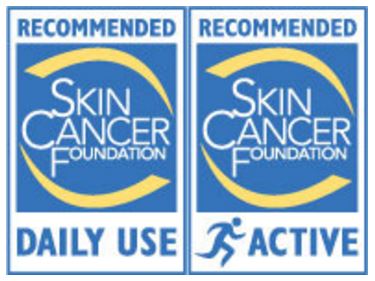New York, NY (January 13, 2022) — When a new year comes around, many people assess their health and vow to improve their wellbeing. Resolving to take better care of your skin is a great place to start: After all, it is the body’s largest organ. Skin cancer is the world’s most common cancer, but the good news is that changing your habits can both significantly lower your risk of the disease and help you identify any suspicious spots before they become dangerous.
“Skin cancer is highly preventable, and the vast majority of cases are curable if they are diagnosed and treated early enough,” said Deborah S. Sarnoff, MD, president of The Skin Cancer Foundation. “This is why awareness is so critical, and why The Skin Cancer Foundation encourages everyone to practice a good sun safety routine all year round.”
Here are three things you can do to protect and care for your skin in 2022:
1. Check in with Your Skin
You may have heard about the Seattle Kracken hockey fan who, during a game, spotted a suspicious mole on Vancouver Canucks Assistant Equipment Manager Brian Hamilton’s neck. The fan, Nadia Popovici, got his attention and told him she thought the mole looked cancerous, and that he should see a doctor immediately. Popovici was right —after heeding her advice, Hamilton underwent a biopsy and discovered the spot was a melanoma. Hamilton was lucky Popvici alerted him to the danger of the mole, and the story is a great reminder to everyone that they should stay vigilant about anything new, changing or unusual on their skin.
Skin cancers can be disfiguring and even deadly if they progress, but they are very treatable if detected in its initial stages. That’s why early detection is so important. If caught and treated early, before the cancer has spread, the survival rate for melanoma is 99 percent. Hamilton was able to have his mole removed immediately, but his doctor warned that if he had left it alone, he could have been in grave danger in several years — the five-year survival rate for patients whose melanoma has spread to distant organs is only 27 percent. The Skin Cancer Foundation recommends you examine your skin from head to toe monthly and see a dermatologist at least once a year for a professional skin exam. If you spot anything new, changing or unusual, make an appointment to see your dermatologist right away.
2. Cover Up
Clothing is the best defense against skin cancer, and one of the easiest ways to protect yourself from the sun’s harmful ultraviolet (UV) rays. The more skin you can cover, the better. But beware: not all clothing protects equally. Tight-knit fabrics (like denim) and synthetic materials (like polyester) offer better sun protection than loosely woven fabrics and natural materials. Color matters, too. Since dark or bright colors absorb UV rays rather than allowing them to penetrate, they’re a better choice for protection than lighter shades. Look for clothing with an ultraviolet protection factor (UPF) rating on the label to know exactly how much protection you’re getting. The Skin Cancer Foundation recommends choosing clothing with a UPF of at least 30 to provide sufficient sun protection. Invest in a wide-brimmed hat to protect your face, head and neck. To protect your eyes and the sensitive skin around them, wear UV-blocking sunglasses — the bigger the lenses, the better.
3. Use Sunscreen Every Day
Sunscreen helps reduce the risk of skin cancer and should be part of your daily routine. Sunscreens come in many formulas — including lotions, sticks and powders — so everyone can find one that fits their lifestyle. For daily use, choose a broad-spectrum sunscreen with a sun protection factor (SPF) of 15 or higher. For extended outdoor activity, bump it up to an SPF of 30 or higher. Apply one ounce (about the size of a golf ball) of sunscreen to your body 30 minutes before going outside and reapply every two hours or immediately after swimming or sweating.
When shopping for sun protective products, look for The Skin Cancer Foundation’s Seal of Recommendation (pictured below). The Foundation’s Science & Education team works closely with our volunteer Photobiology Committee to ensure that every product that earns the Seal meets or exceeds our scientific criteria. Look for it on sunscreens, cosmetics, UPF fabric for clothing, awnings and umbrellas, UPF hats, sun-protective eyewear, window film and window glass.

For more information about skin cancer prevention, detection and treatment, visit SkinCancer.org.
###
About The Skin Cancer Foundation
The Skin Cancer Foundation saves and improves lives by empowering people to take a proactive approach to daily sun protection and the early detection and treatment of skin cancer. The mission of the Foundation is to decrease the incidence of skin cancer through public and professional education and research. Since its inception in 1979, the Foundation has recommended following a complete sun protection regimen that includes seeking shade and covering up with clothing, including a wide-brimmed hat and UV-blocking sunglasses, in addition to daily sunscreen use. For more information, visit SkinCancer.org.
